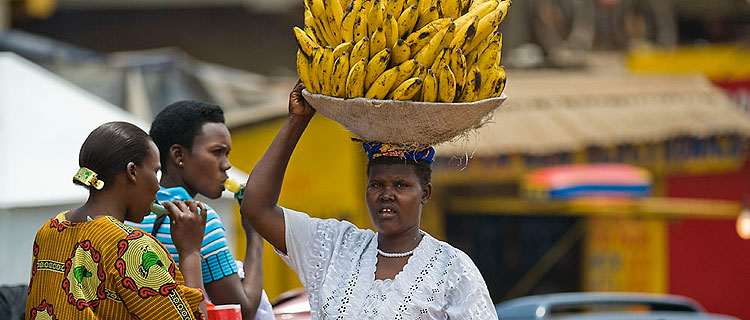
Urban agriculture
Look to Kampala
Ugandan capital focuses on the potential rather than the risks of urban agriculture
When it comes to food production, urban agriculture is considered to be something of an ugly duckling. It goes against most accepted city planning approaches, and farmers are susceptible to occupational and health risks as they grow crops along roadsides, wetlands and on contaminated sites. Headaches and respiratory problems are common health complaints.
But just like the ugly duckling, urban agriculture comes with a tremendous potential.
Regulate it, don't abandon it
Kampala, the capital and Uganda's largest city, has found a way to preserve its vast and highly visible agriculture, even in densely populated areas.
With its tropical climate, good soils, access to water and abundant rainfall, this rapidly growing city has proven well suited to agriculture. In 2002, about 49% of Kampala households were farming within the city's boundaries. About half of the households were raising only crops, whereas the other half was raising both crops and livestock. The vast majority of the households were farming for survival, not to make money.
But the accompanying risks and health issues caused the city council to react. In 2006, Kampala changed how it regulates urban food production. The outcome was a series of legislations that defined how urban agriculture should be carried out in the city.
Unique initiative
The effort acknowledged urban agriculture as an important economic activity, and developed regulations to ensure public health.
"Urban agriculture is a practice carried out in most cities in the developing world but most city laws disregard it which also leads to active harassment of those practicing it. The effort in Kampala to protect and develop urban agriculture is unique," says Professor Thomas Elmqvist.
Elmqvist is the editor of the Cities and Biodiversity Outlook, the world's first official assessment of urban biodiversity and ecosystem services. It examines the links between urbanization, biodiversity and ecosystem services. One of the key messages of the assessment is that food and nutrition security depend on local and biodiversity-based food systems.
Much to gain
The assessment has identified a new approach that recognises the links between urban and rural areas within a city.
"This locally based approach looks at ways to build diverse supplies of food close to population centres and to strengthen local decision-making and management of food production," Elmqvist says. The experiences from Kampala also shows that there are benefits related to urban agriculture, such as greening of the city, community organising and strengthening social networks.
Elmqvist argues that development of urban food systems needs to be considered on neighbourhood level, city level and city-region level. But it needs to come with proper legislation, training and financial support or economic incentives. Without this, sustainable food systems in urban areas remain on paper only.
"Kampala has succeeded in focusing on the benefits of urban agriculture while also addressing the many critical aspects of it. Provided it comes with strong regulations and multi-level management, there is much to gain from it," Elmqvist concludes.
See video with Thomas Elmqvist explaining the many links between urbanization, biodiversity and ecosystem services:
Visiting address: Albanovägen 28. Disability entrance: Albanovägen 18
Deliveries: Roslagsvägen 28
Postal address (courier packages):
Stockholms Universitet
Stockholm Resilience Center
[Recipient]
Frescativägen 8
114 18 Stockholm
Sweden
Postal address (letters):
Stockholms Universitet
Stockholm Resilience Center
[Recipient]
Frescativägen 8
SE-106 91 Stockholm
Sweden
Phone: +46 8 674 70 70
Organisation number: 202100-3062
VAT No: SE202100306201






